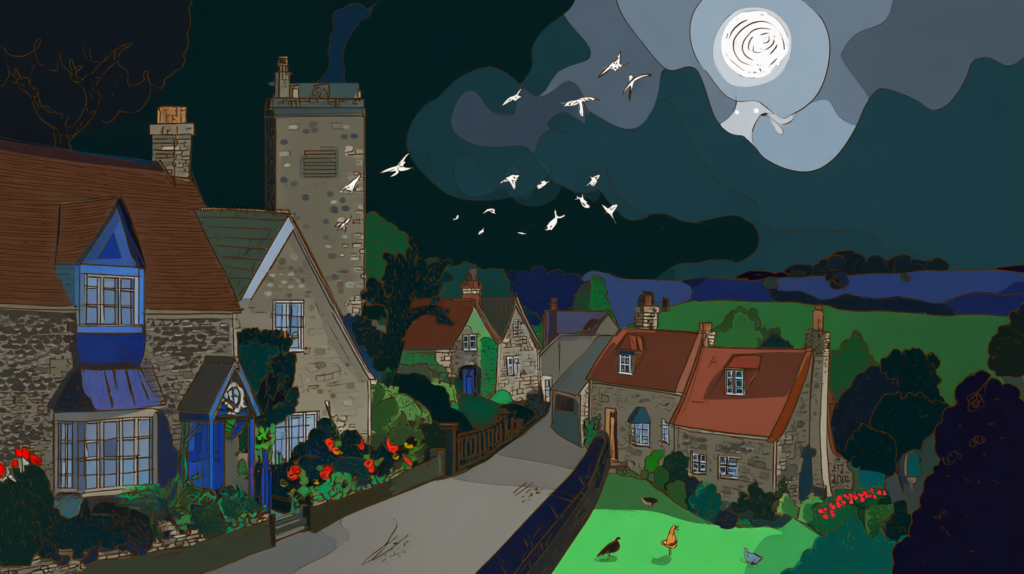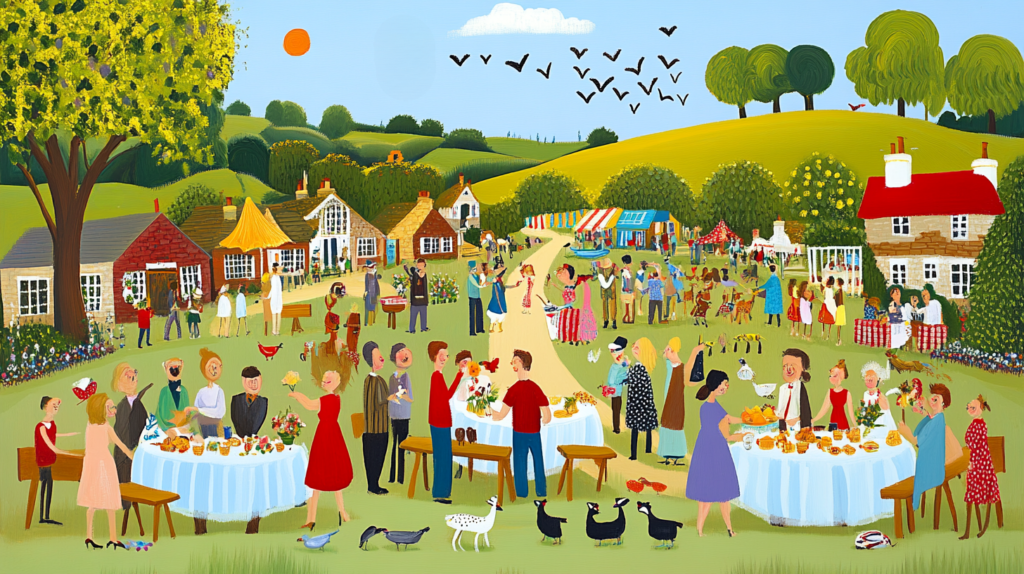
Logic Grid Puzzles – How to Create Them Using ChatGPT
Let me tell you a secret: I used to think logic grid puzzles were brewed up by some kind of math wizard sitting in a lonely tower with seven colour-coded pens and a mind like Sherlock Holmes. You know the ones — clues like “The woman with the umbrella didn’t arrive after the man who brought the tartan thermos,” and you’re meant to nod sagely and say, “Ah yes, of course, that means Greg was in the shed with the pruning shears.”
But then I discovered something magical: I could make these puzzles myself — and not only that, I could make them with a little help from ChatGPT. It was like going from watching the bake-off to stepping into the tent with my own apron and a tray of scones.
And the best part? You don’t need to be a puzzle master or even particularly tech-savvy. If you can chat, you can make a puzzle. Really. Let me show you how.

It starts, like all good mysteries, with a setting. For me, it’s always something cozy — a fictional Devon village where the air smells of sea salt and shortbread, and someone, unfortunately, has met an untimely end with a candlestick.
Take Otterbury, for instance. It’s got a crumbling church, a goat farm, and a pub called The Mason’s Rest. A place where secrets ferment just as nicely as elderflower wine. That’s where our puzzle takes shape — not in a spreadsheet, but in a story.
Now, before you get the idea that this is all terribly complicated, let me break it down (with a wink, of course). A logic grid puzzle is just a way of sorting out relationships between categories — who did what, with what, where, and maybe why. The reader is given a series of clues, and from those clues, they fill out a little grid to figure out the truth.
Think of it like matchmaking for murder.
You choose a few simple categories — say, three suspects, three murder weapons, and three locations. Then you come up with the actual solution (who really did it, with what, and where), and then — here comes the fun part — you ask ChatGPT to help you write clues that point to that solution without giving it away too quickly.
Here’s a peek behind the curtain:
🟨 Sample Prompt for ChatGPT
“I’m creating a cozy murder mystery logic grid puzzle. The suspects are Alice (the vicar’s wife), Bertie (the baker), and Clara (the goat farmer). The weapons are a rolling pin, knitting needle, and garden spade. The locations are the tea tent, the potting shed, and the village green. Alice used the knitting needle in the potting shed. Bertie used the garden spade on the village green. Clara used the rolling pin in the tea tent. Can you write 6 clues that will help a reader solve this using logic, without directly stating the answers?”
And just like that, your AI assistant becomes your Watson.
The clues it gives might say something like:
- The person who used the garden spade wasn’t in the potting shed.
- Clara didn’t commit the murder on the village green.
- The knitting needle was not used in the tea tent.
- Alice did not use the rolling pin.
Now, is this puzzle going to stump Hercule Poirot? Probably not. But will it delight your cousin Margaret, your local book club, or your newsletter readers? You bet your woolly socks it will.
When I made my first puzzle, I’ll admit, I was worried. What if the clues didn’t make sense? What if the logic didn’t line up? What if someone solved it in two minutes and thought, “Well that was a waste of ink”? But here’s where ChatGPT becomes a rather delightful safety net.
You can say things like:
“Can you check if the clues I gave lead to one unique solution?”
And it’ll walk you through the logic, step by step — like a helpful librarian gently nudging you toward the right book on the shelf. No judgment, just patient puzzle support.
It’s a bit like having a co-writer who never complains, never sleeps, and can produce ten variations of the same clue faster than you can say “cream first or jam?” (Devon, obviously.)
Let’s build one together, shall we?
Setting: Otterbury village fête
Suspects: Mabel the jam judge, Cyril the beekeeper, and Daphne the milliner
Weapons: Sugar tongs, parasol, pie server
Locations: Tea tent, raffle booth, apple bobbing stall

Now, I’ve decided — and here’s the part where I feel like a benevolent puppeteer — that Cyril committed the deed with the parasol at the raffle booth. It’s always the quiet ones.
I plug that into ChatGPT with a polite prompt, and it sends back a charming little bundle of clues. I test it, fill in the grid myself, and sure enough, everything clicks.
My readers won’t just be solving a puzzle — they’ll be stepping into the village, picturing Mabel fussing over scones and Daphne adjusting her feathered hat while somewhere, beneath bunting and behind jam jars, a mystery unfolds.
And that’s the magic, isn’t it? A logic grid puzzle isn’t just a game. It’s a tiny story. A world in miniature. And with ChatGPT, you don’t need to stare at a blank page or agonise over your clues. You get to play. To create. To imagine.
And if something goes wonky — if the clues contradict, or if the solution’s not quite clear — you can just ask your AI pal to help you sort it out. Like asking your cat to move so you can actually read the paper. Persistent, but possible.
Now, a few words to the wise, from someone who’s spilled more than one cup of tea on an early draft:
- Start simple. 3×3 is charming and perfectly puzzling.
- Keep your characters cozy and your clues clean.
- Don’t be afraid to tweak — ChatGPT won’t take offense if you rewrite its clues or ask for gentler language.
- And always test your puzzle yourself. If you can solve it with the clues provided, others will be able to as well.
Above all, have fun with it. Creating puzzles isn’t a test — it’s a hobby, an art form, a little nudge at someone’s brain wrapped in story and charm. And with ChatGPT, you’ve got a powerful (and rather agreeable) sidekick to make it happen.
I’ve made a handful of these now, and each one is its own little adventure. I like to think of them as my own miniature Agatha Christie stories — no blood, no gore, just a missing pie server and a very suspicious smile from Cyril.
So give it a try. Open up ChatGPT, choose your suspects, and see what you can dream up. I promise, it’s easier — and far more fun — than it looks.
And who knows? You might just become the next great puzzle maker of Otterbury.